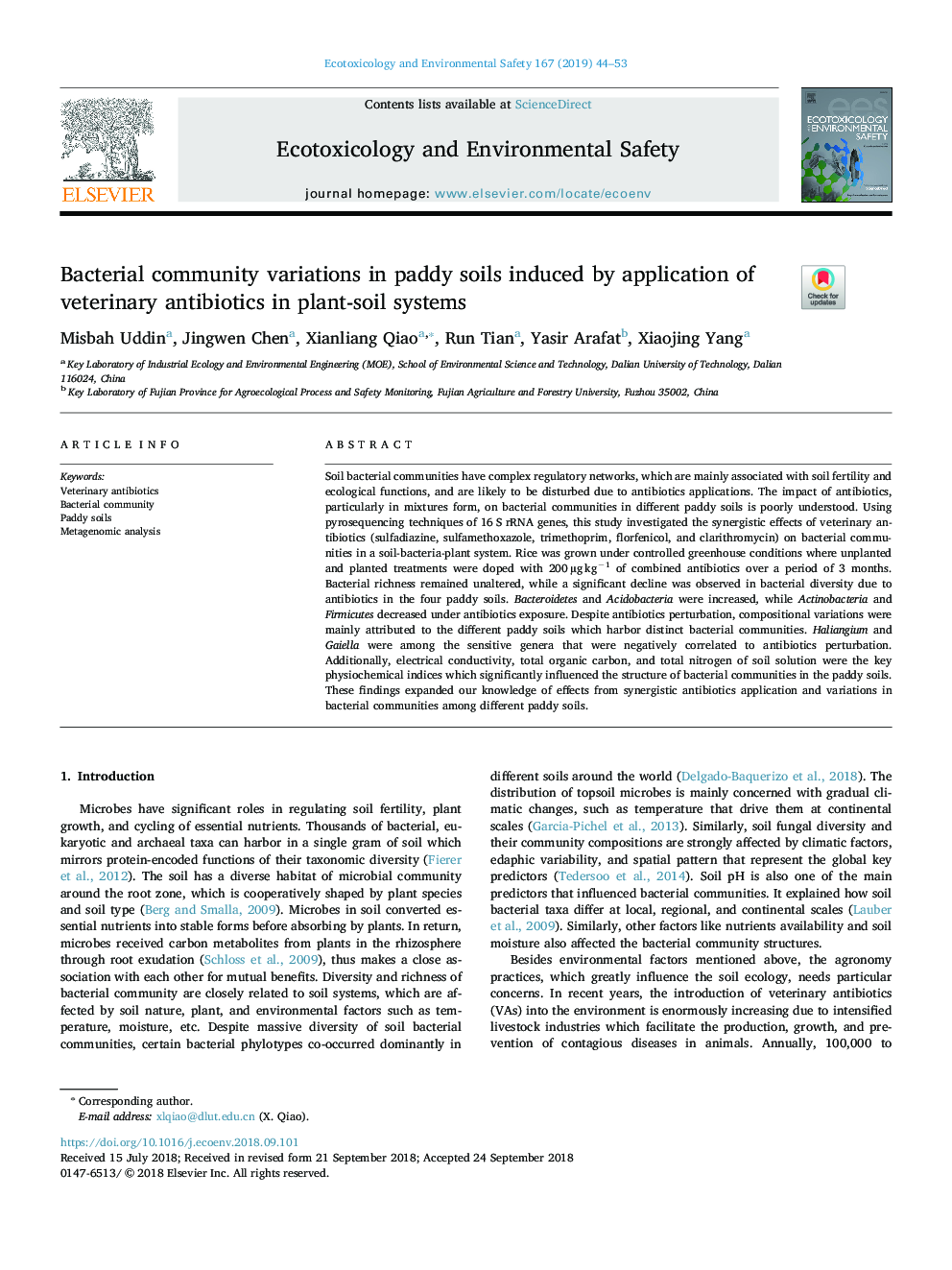| Article ID | Journal | Published Year | Pages | File Type |
|---|---|---|---|---|
| 11013109 | Ecotoxicology and Environmental Safety | 2019 | 10 Pages |
Abstract
Soil bacterial communities have complex regulatory networks, which are mainly associated with soil fertility and ecological functions, and are likely to be disturbed due to antibiotics applications. The impact of antibiotics, particularly in mixtures form, on bacterial communities in different paddy soils is poorly understood. Using pyrosequencing techniques of 16â¯S rRNA genes, this study investigated the synergistic effects of veterinary antibiotics (sulfadiazine, sulfamethoxazole, trimethoprim, florfenicol, and clarithromycin) on bacterial communities in a soil-bacteria-plant system. Rice was grown under controlled greenhouse conditions where unplanted and planted treatments were doped with 200â¯Âµgâ¯kgâ1 of combined antibiotics over a period of 3 months. Bacterial richness remained unaltered, while a significant decline was observed in bacterial diversity due to antibiotics in the four paddy soils. Bacteroidetes and Acidobacteria were increased, while Actinobacteria and Firmicutes decreased under antibiotics exposure. Despite antibiotics perturbation, compositional variations were mainly attributed to the different paddy soils which harbor distinct bacterial communities. Haliangium and Gaiella were among the sensitive genera that were negatively correlated to antibiotics perturbation. Additionally, electrical conductivity, total organic carbon, and total nitrogen of soil solution were the key physiochemical indices which significantly influenced the structure of bacterial communities in the paddy soils. These findings expanded our knowledge of effects from synergistic antibiotics application and variations in bacterial communities among different paddy soils.
Related Topics
Life Sciences
Environmental Science
Environmental Chemistry
Authors
Misbah Uddin, Jingwen Chen, Xianliang Qiao, Run Tian, Yasir Arafat, Xiaojing Yang,
